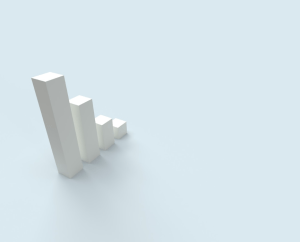
Data is the backbone of contemporary society, influencing our daily decisions, fueling the economies of nations, and shaping future innovations. In this age of big data, however, we are often drowned by the sheer volume of information. The key to managing and leveraging this data lies in innovative data visualization techniques that enable us to convert raw data into understandable, visually appealing, and actionable insights. In this article, we delve into the dynamic world of data visualization, discussing its importance in the era of big data, the various types of visual aids, and how to use them for optimal results. Keep reading.
The Evolution of Data Visualization
[Alt text: Close-up of raw coded data.]
Although data visualization seems like a contemporary concept, its roots can be traced back to as early as the 16th century, when scholars used simplistic drawings to graphically represent journeys, battles, and populations. The 19th century, often regarded as the Golden Age of data visualization, witnessed a surge of interest in the graphical presentation of data, with innovators like Florence Nightingale popularizing concepts like pie charts to advocate for the health sector. Modern data visualization, however, took off during the digital revolution and has since evolved rapidly, mirroring the pace of technological advancements.
The scatter chart, for instance, is a popular data visualization tool that’s commonly used to plot data points with two variables, providing an excellent way to visualize correlation and trends. Scatter charts reveal patterns or correlations within the data. By plotting the values of the two variables on the X and Y axes, these charts make it easy to identify any trends or relationships between them. For example, by using a scatter chart to analyze sales data, one can determine whether there is a connection between the price of a product and the amount sold. It can also be used to visualize how changes in one variable affect the other.
The Importance of Data Visualization in Big Data
Our brain processes visual information thousands of times faster than text. The era of big data, marked by the rapid generation and collection of large-volume data, can lead to information overload. Without a proper mechanism to accurately communicate this information in a simplified manner, all this valuable data risks becoming just noise. This is where data visualization comes into play. It’s a graphical representation of information that uses elements such as charts, graphs, and maps to display large amounts of complex data in a way that’s easy to understand and interpret.
Data visualization is an indispensable tool for anyone dealing with large amounts of data. It helps to simplify complex data sets, bring clarity to confusing patterns, and spotlight trends that inform decision-making. It’s a vital tool for policymakers, business executives, data analysts, and academics, amongst others, who rely heavily on the power of data to drive innovation, decision-making, and strategic planning. Data visualization is not just about presenting data; it’s a potent tool for telling compelling stories with data that spur action.
Types of Data Visualizations and Their Uses

Each data has a story to tell, and the type of visualization used can significantly influence how the story is told. There are several types of data visualizations, each designed to present data in a way that highlights different aspects of the data. From bar charts that provide an excellent way to compare data sets, to line graphs that are great for showing trends over time, to geographic maps for presenting spatial data. Other types include histograms, pie charts, tree maps, and scatter plots.
Selecting the appropriate visualization tool depends on the nature and structure of the data, and the type of information the user aims to communicate. It’s critical, therefore, to understand the strengths and weaknesses of each visualization, as well as the questions you want your data to answer. For example, if you’re looking to compare two sets of data, a bar chart could be an effective tool.
Data visualization can be seen as the bridge that connects the complex world of big data to the basic human need for easily digestible and understandable information. Proper data visualization will continue to play a role in virtually every aspect of our society – enhancing our understanding of big data, informing decision-making processes, and offering us a valuable tool for storytelling. As we navigate this vast sea of information, the power of apt data visualization remains our best course to mastering the tide of the big data era.

